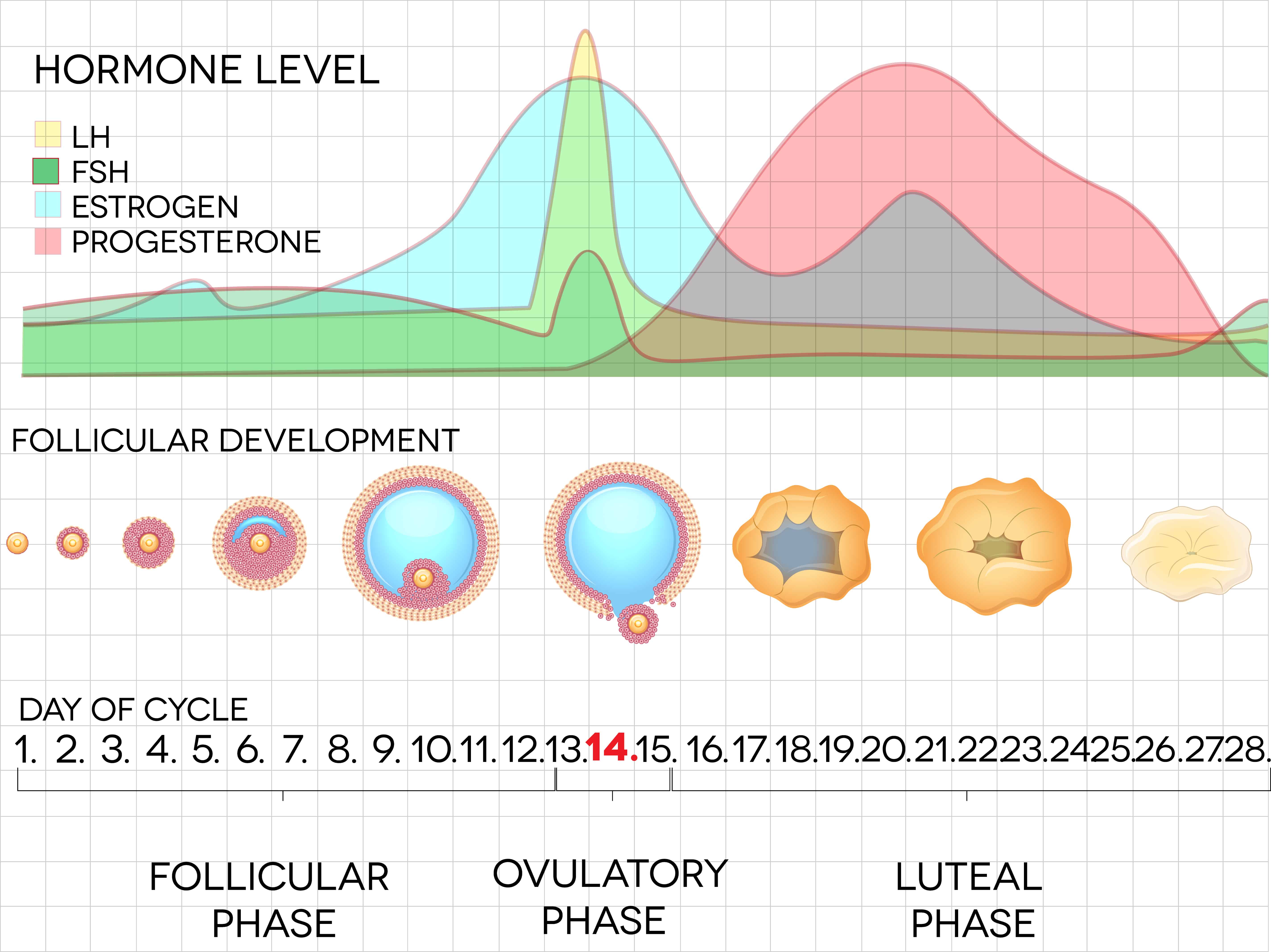When we think about the menstrual cycle, many of us will immediately associate it with just one phase of this monthly cycle – menstruation. However, the menstrual cycle is actually made up of four distinct phases, each of which bring with them their own unique set of physical changes.
You’ll be well-acquainted with many of the symptoms that accompany your monthly period, such as bloating, cramps and tender breasts, but have you ever stopped to think of the positive side-effects of your cycle? There are, in fact, several ways in which hormonal fluctuations throughout your cycle bring about some fascinating changes. Here, we look at these and at the hormonal adjustments occurring behind the scenes.
Your hormones often get a bad rap, with many blaming a bad mood on their hormones, but in reality, hormones play just a small role in such factors. Equally, they play a role for all temperaments – the good and the bad!
What are hormones?
Hormones are natural substances made by your body and are responsible for sending and relaying messages between your cells and organs to perform certain functions. To illustrate this simply, we can look at the example of how our hormones stimulate puberty in females:
- Luteinising hormone (LH) and follicle-stimulating hormone (FSH) are produced in the pituitary gland.
- Production of LH and FSH increases at puberty (usually between ages 8-13).
- This increase in LH and FSH stimulates the production and release of female sex hormones.
- These sex hormones, in turn, result in breast growth, hair growth in the pubic and armpit regions, growth in general, and of course the start of the menstrual cycle.
What are the female sex hormones?
The female sex hormones mostly comprise of oestrogen and progesterone. Although testosterone is generally considered a male sex hormone, a small amount of it is also needed by females as well.
Oestrogen:
Produced almost entirely in the ovaries, oestrogen is the main contender of female sex hormones. It is needed to achieve puberty, menstruation, pregnancy and menopause. But, as well as the role it plays in the aforementioned stages, oestrogen has significant effects on the brain, heart, hair, skin, bones and muscles!
Progesterone:
Progesterone is made by the ovaries directly after ovulation (when an egg is released). It is also produced by the placenta during pregnancy. This hormone is needed to line the uterus, support pregnancy and to suppress the production of oestrogen following ovulation.
Testosterone:
In females, testosterone is made in small amounts in the ovaries and adrenal glands. It is needed to maintain sexual libido, regulate the menstrual cycle and support musculoskeletal strength.
The menstrual cycle
Before we dive in to see how female hormones change the brain, we should first run through what the menstrual cycle is. Put simply, the menstrual cycle is the interval from day one of a woman’s period until the day before her following period. The menstrual cycle is controlled by the female sex hormones, as well as LH and FSH. The fluctuations in these hormones cause the womb lining to thicken, follicular development and release, ending with the womb lining shedding as a period.

So, does the menstrual cycle control your brain?
Whilst this sentiment has been drilled into women over the centuries – that their mood and sexual desire is all related to what time of the month it is – it is not completely unfounded.
A lot of women will claim to feel irritable or worried close to their period, and hormonally, we are instructed to feel more sexually motivated around the time of ovulation. But, such symptoms cannot and should not always be explained in relation to our menstrual cycle.
To date, research has shown that women’s brains do change throughout the menstrual cycle. At one phase, the brain is actually larger in size! These findings also indicate that facets such as spatial awareness, memory, social skills and perception may also peak at certain points throughout the menstrual cycle!

How does this all work?
Research conducted by Maki and colleagues at the Gerontology Research Centre, Baltimore in 2002 investigated how changes in oestrogen levels affect women’s abilities over a given month.
Participants were checked just after their period (low levels of oestrogen and progesterone), and again roughly a week after ovulation (high levels of oestrogen and progesterone). Although the study only included 16 women, their findings were without a doubt very interesting. Of course, whether they are definitive is another matter, more research would be needed to confirm their findings.
What were Maki’s findings?
Maki’s research concluded that when female hormones were higher, the following functions improved:
- ‘Implicit remembering’ (described as effortless memory)
- Perception (e.g. the ability to detect fear)
- Social skills
And additionally, when female sex hormones were higher, spatial awareness was observed as being poorer than when hormones were at their lower levels throughout the cycle.
How can these findings be explained?
Whilst these results are not conclusive, Maki did put forth theories for why the above functions fluctuated through the menstrual cycle of the women in the study.
He linked improved memory, perception and social skills to observed changes in size of the amygdala and hippocampus when oestrogen levels were increased. Research points to the possibility that the hippocampus is responsible for not just storing memories, but also for social skills and helping us to better understand those around you. The amygdala is involved in the processing of emotions, and hence, the observed increase in size is thought to explain the improvements in social perception seen in women in the study.
Why women might have poorer spatial awareness on days when their sex hormones are higher remains unknown, however, clumsiness has been listed as one of the 100 known symptoms of PMS (premenstrual syndrome).
What might this mean then?
Research like Maki’s highlights the absence of information we have about how menstruation and the menstrual cycle do have positive effects. Despite the 100+ symptoms related to PMS, female hormones could bring about much more than we even realise, covering the good and the not-so-good. Even though these findings may not be certain, by taking a look at such research, it helps to transform the connotations of ‘being hormonal’, from a presumptuous, generalised comment, to one that encompasses the astounding variety of physical and cognitive changes experienced during the menstrual cycle.

Sources:
http://www.bbc.com/future/story/20180806-how-the-menstrual-cycle-changes-womens-brains-every-month
https://www.nhs.uk/conditions/periods/fertility-in-the-menstrual-cycle/
https://www.healthline.com/health/female-sex-hormones









Join the discussion